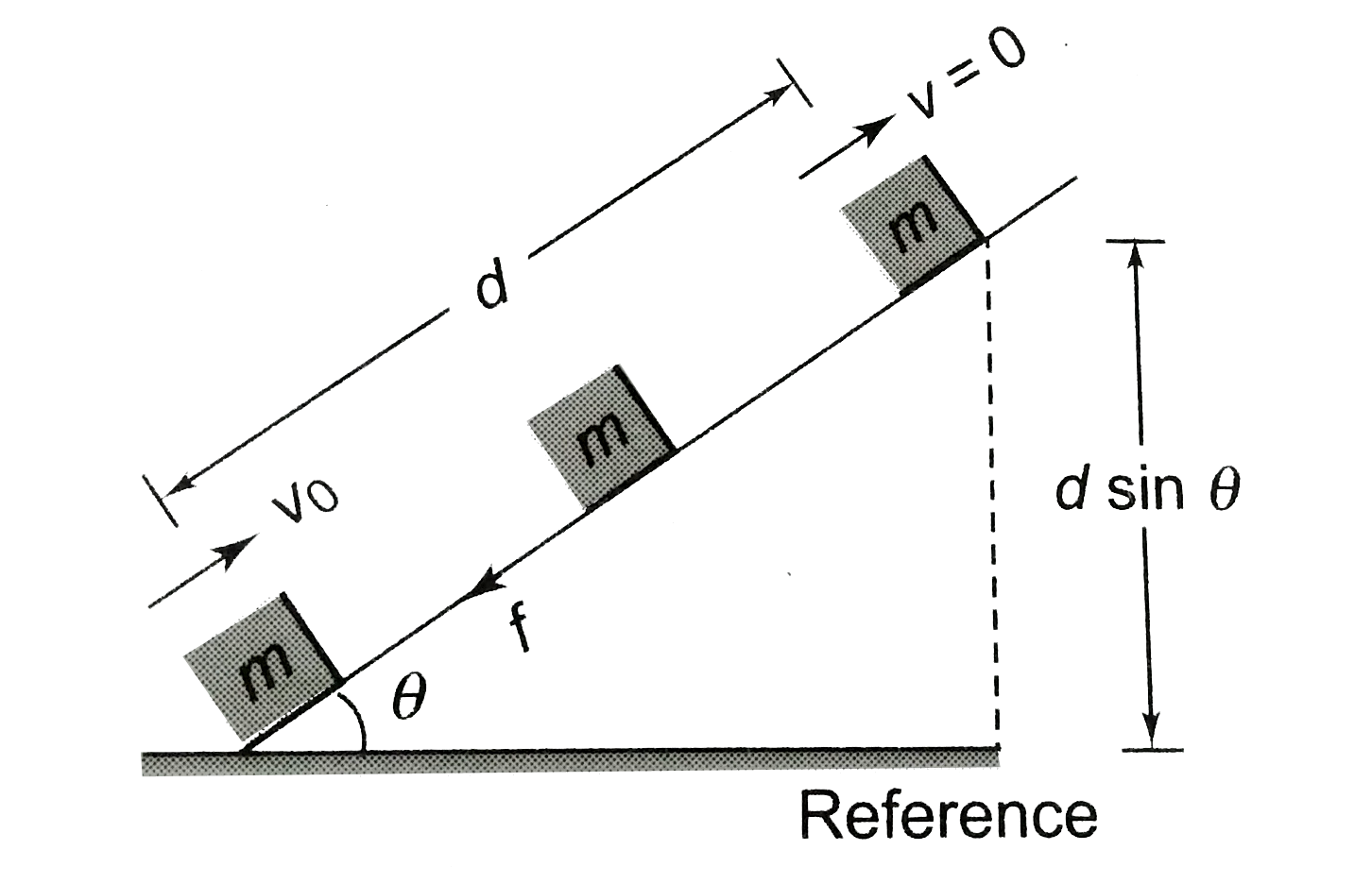A body of mass m is pushed with the initial velocity v0 up an inclined plane set at an angle α to the horizontal. The friction coefficient is equal to k. What distance will the body cover before it stops and what work do the friction forces perform over this distance?

K1+U1=K2+U2+Wf [Wf=fd]
12mv20=mgdsinθ+μmgcosθd
d=v202g(sinθ+μcosθ)
work done by friction
W′f=−Wf=−μmgcosθd
=−μmgcosθv202g(sinθ+μcosθ)
=−μmv202(tanθ+μ)
Topper's Solved these Questions
Similar Questions
A disc of mass m=50g slides with the zero initial velocity down an inclined plane set at an angle α=30∘ to the horizontal, having traversed the distance l=50cm along the horizontal plane, the disc stops. Find the work performed by the friction forces over the whole distance, assuming the friction coefficient k=0.15 for both inclined and horizontal planes.
View SolutionA body of mass m is pushed with the initial velocity v0 up an inclined plane of angle of inclination θ. The co-efficient or friction between the body and the plane is μ. What is the net work done by fnction during the ascent of the body before it comes to stop ?
View Solution
Knowledge Check
A small mass slides down an inclined plane of inclination θ the horizontal the coefficient of friction is m=μ0x, where x is the distance by the mass before it stops is .
A1μ0tanθB4μ0tanθC12μ0tanθD1μ0tanθ
A disc of mass m slides with the zero initial velocity down an inclined plane of inclination θ to the harizontal, having traveled the distance d along the horizontal plane, the disc stops. Find the work performed by the friction over the whole distance, assuming the friction coefficient μ for both the inclined and horizontal planes.
View SolutionA bar of mass m is pulled by means of a thread up an inclined plane forming an angle α with the horizontal (figure). The coefficient of friction is equal to k. Find the angle β which is thread must form with the inclined plane for the tension of the thread to be minimum. What is it equal to?

View SolutionA body with zero initial velocity slips from the top of an inclined plane forming an angle α with the horizontal. The coefficient of friction μ between the body and the plane increases with the distance s from the top according to the law μ=bs. After what distance the body will stop.
View SolutionA small body was launched up an inclined plane set at an angle α=15∘ against the horizontal. Find the coefficient of friction, if the time of the ascent of the body is η=2.0 times less than the time of its descent.
View SolutionA point moves rectilinearly with deceleration which depends on the velocity v of the particle as a=k√v, where is apositive constant. At the initial moments the velocity of the point is equal to v0. What distance will it cover before it stops, and what time it will take to cover that distance.
View SolutionA block sliding down on an inclined plane forms an angle θ with the horizontal. The friction coefficient depends on the distance x covered as μ=kx , where k is a constant. Find the distance covered by the block till it stops and its maximum velocity over this distance. Also , sketch a graph between square of velocity and distance covered x.
View SolutionA small bar starts sliding down an inclined plane forming an angle α with the horizontal. The friction coefficient depends on the distance x covered as k=ax, where a is a constant. Find the distance covered by the bar till it stops, and its maximum velocity over this distance.
View Solution
